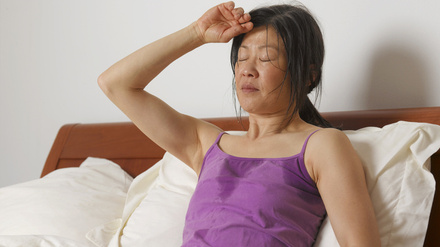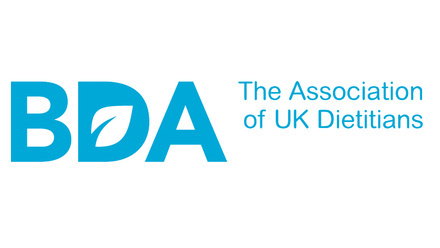Hannah Diskin introduces a Therapy Outcome Measure for Long Covid and invites volunteers from other dietetic services to pilot it further.
"The Therapy Outcome Measure (TOM) is an outcome measure that allows professionals from many disciplines working in health, social care and education to describe the relative abilities and difficulties of a patient/client in the four domains of ‘impairment’, ‘activity’, ‘participation’ and ‘wellbeing’ in order to monitor changes over time."1,2,3 The first three domains are based on the International Classification of Functioning (World Health Organization).4 The fourth domain (wellbeing) was added due to the overwhelming evidence that engagement with AHPs often included goals to affect this area.
In Leeds Community Healthcare NHS Trust, we were fortunate to work with Professor Pamela Enderby in 2013 to develop the first set of specific dietetic outcome measures for undernutrition, obesity, irritable bowel syndrome (IBS), type 2 diabetes, cardiovascular disease and home enteral feeding. These have since been published in the third and fourth editions (2015, 2019)2 of the TOMs User Guide Manual. Use of these dietetic outcome measures is firmly embedded within the General Dietetic Department in Leeds Community as well as in other dietetics services around the UK. Dietitians often have an impact that is broader than that which is generally measured. For example, dietitians may reduce anxiety, and increase a person’s independence, confidence and social participation. It is important to reflect the broad influence of our services.
As a dietitian working in the Long Covid rehabilitation team in Leeds, I struggled to find a validated outcome measure that would work in this setting and reflect the objectives of our services. Whilst the occupational therapists and physiotherapists have an abundance of outcome measures, dietitians seemed to be left behind.
Weight and handgrip measure are both helpful to give an objective measure of changes to weight and muscle strength over time. However, drawing conclusions about weight for patients with Long Covid is not straightforward as within this diverse group of patients some will be aiming for weight gain, others weight stability and others weight loss. Therefore, analysing and drawing conclusions from this data is not simple and any alterations in these measures can take time to see.
Whilst working in a Long Covid MDT, dietitians can certainly utilise the MDT measures such as the COVID-19 Yorkshire Rehabilitation Scale (C19-YRS)5 and Modified Fatigue Impact Scale (MFIS)6 but to have a profession-specific outcome measure is of course beneficial (especially if you are a dietitian working outside of an MDT).

The C19-YRS was the first published patient reported tool (PROM) developed by a research team,5 and has subsequently been recommended by NHS England as an outcome measure for first assessment, and at six weeks and six months within Long Covid rehabilitation.
The MFIS measures the impact fatigue takes on a patient’s daily life.6
In 2021 a draft Long Covid TOM was developed for Long Covid rehabilitation services and included the following impairments: complex physical, cardiac, cognitive, psychological, swallowing, voice impairment/dysphonia, respiratory and chronic fatigue (available from the author by email [email protected]). In consultation with the author, a nutrition impairment scale was developed, which was based on the experiences of supporting patients with Long Covid in Leeds (see Figure 1). This was piloted locally and inter-rater reliability was checked with colleagues, which was positive and provided excellent feedback.
Whilst piloting the Long Covid nutrition TOM the following advantages were observed:
-
Clinician reported (no extra work for the patients who are often fatigued)
-
Takes only a few minutes to complete at the end of each consultation and in Leeds data is captured using a template for SystmOne. This can then easily be reported on using existing SystmOne processes
-
Sensitive enough to show changes in the patient as early as the next review, which can contribute to decision-making around the dietetic plan
-
It shows not only patient change over time, but also the value of having a dietitian working with this patient group – essential for securing future funding
However, this outcome measure now needs to be piloted in other dietetic services in the UK and volunteers are needed. This would involve recording the measures following patient consultations and providing feedback on your experience.
-
Do you provide dietetic support to patients recovering from Long Covid? This can be as part of an MDT or within general dietetic services.
-
Do you have experience using TOMs with other patient groups?
-
Would you like to be part of validating the Long Covid nutrition impairment TOM? It’s great experience and provides evidence for CPD!
If you’d like to get involved please email me at [email protected].
For a full copy of the Therapy Outcome Measure for Long Covid (in draft) please contact either: [email protected] or [email protected].
Note: you need to be familiar with the processes of the Therapy Outcome Measure.
Figure 1: Long Covid Rehabilitation Services, Long Covid TOM: Nutritional Impairment – in development
The individual does not have to have each feature mentioned in the descriptor. It is a best fit description, i.e. does this description fit the individual better than the other one? Use 0.5 to indicate if the individual is slightly better or worse than the descriptor. Consider as appropriate for age.
Impairment: The impact of the nutritional lifestyle choices upon body function; structure
|
Score |
Descriptor |
|
0 |
Profound Unintentional weight changes of more than 20% since infection. Very poor diet quality and does not know what to eat. Reliant on supplements to meet micronutrient requirements. Significant and severe taste or smell disturbances. Significant, severe and continual gastrointestinal symptoms requiring multiple medications and/or interventions. |
|
1 |
Severe Unintentional weight changes of more than 15% since infection. Poor diet quality and unsure what to eat. Significant taste or smell disturbances. Severe and frequent gastrointestinal symptoms requiring several medications and/or interventions. |
|
2 |
Severe-moderate Unintentional weight changes of more than 10% since infection. Diet quality variable. Some knowledge of what to eat but not does not apply this regularly. Significant taste or smell disturbances. Severe-moderate and frequent gastrointestinal symptoms requiring limited medications and/or interventions. |
|
3 |
Moderate Unintentional weight changes of more than 5% since infection. Meeting nutritional requirements 50% of the time. Basic knowledge of what to eat. May require some additional supplementation to meet micronutrient requirements. Frequent but mild taste or smell disturbances. Moderate gastrointestinal symptoms requiring medication and/or an intervention as required which can stabilise symptoms. |
|
4 |
Mild Unintentional weight changes of less than 5% since infection. Meeting nutritional requirements most days. Has a good knowledge of what to eat and applies this in practice most days. Occasional mild taste or smell disturbances. Mild and occasional gastrointestinal symptoms which stabilise spontaneously or with simple lifestyle changes. |
|
5 |
No condition Weight stable or any weight change is intentional. Meeting nutritional requirements. Has a very good understanding of how to eat a balanced diet. Does not require additional supplementation to meet nutritional requirements – can do this through food alone. No taste or smell disturbances. No gastrointestinal symptoms. |
Activity: The execution of a task or action by an individual, e.g. self-care
|
Score |
Descriptor |
|
0 |
Totally dependent on others (family, carers or staff) for nutritional needs, e.g. shopping, cooking, self-care. Could include very severe cognitive, communication and physical impairments. |
|
1 |
Severe limitations, requires regular assistance from family, carers or staff to self-care, make dietary and other lifestyle choices. Partially dependent on others to access food or to be physically active. |
|
2 |
Moderate limitations, e.g. needs prompting from family, carers or staff to follow a nutrition care plan. Some access issues around food. |
|
3 |
Mild limitations on ability to follow a nutrition care plan, e.g. needs extra time or support with knowledge, confidence, skills or motivation around food choice, cooking and meal planning. Needs support to self-care and self-monitor. |
|
4 |
Very mild limitations on ability to follow a nutrition care plan, e.g. needs first-line advice or resources to increase knowledge, confidence, skills or motivation around food choice, cooking and meal planning. No issues with access to food. |
|
5 |
Completely independent, able and motivated to follow a nutrition care plan. Makes informed independent food and activity choices and able to self-monitor. |
Participation: Involvement in their world around them
|
Score |
Descriptor |
|
0 |
Unable to fulfil any meaningful and/or purposeful role. Unable to participate in any decision-making. No social integration. No future plans in place and unable to take part in decision-making about the future. |
|
1 |
Requires full, skilled assistance to participate in any purposeful and/or meaningful role. Contributes to some basic and limited decision-making. Unable to initiate social integration, low self-confidence/poor self-esteem and socially withdrawn. Can make simple choices but unable to contribute to complex future planning. |
|
2 |
Some participation in familiar purposeful or meaningful roles. Able to engage more readily in some limited social integration. Able to respond to some social integration and some self-confidence but requires support (physical and/or emotional). Able to express preferences spontaneously for future care but requires support to weigh up options, plan and implement. |
|
3 |
Able to participate appropriately in purposeful and meaningful roles. Able to make some decisions and understands potential consequences. Able to seek out and respond to social integration of their own choice but may need encouragement and/or emotional support. Some self-confidence, and able to contribute to future planning. |
|
4 |
Occasional difficulty in fulfilling purposeful or meaningful roles. Able to seek out and respond to social integration of their choice. Minor restrictions in some situations but mostly confident; participates in all appropriate decisions and future planning. |
|
5 |
Able to fulfil purposeful and meaningful roles. Autonomous decision-making and social integration. Support in future planning for complex issues only. |
Wellbeing/distress: Degree of contentment with current situation
|
Score |
Descriptor |
|
0 |
Severe/constant Upset/frustration/anger/distress/embarrassment/concern/withdrawal. High and constant levels of concern/anger/severe depression/apathy. Unable to express or control emotions appropriately. |
|
1 |
Frequent/severe Upset/frustration/anger/distress/embarrassment/concern/withdrawal. Moderate concern, becomes concerned easily, requires constant reassurance/support, needs clear/tight limits and structure, loses emotional control easily. |
|
2 |
Moderate/consistent Upset/frustration/anger/distress/embarrassment/concern/withdrawal. Concern in unfamiliar situation, frequent emotional encouragement and support required. |
|
3 |
Moderate/frequent Upset/frustration/anger/distress/embarrassment/concern/withdrawal. Controls emotions with assistance, emotionally dependent on some occasions, vulnerable to change in routine, etc., spontaneously uses methods to assist emotional control. |
|
4 |
Mild/occasional Upset/frustration/anger/distress/embarrassment/concern/withdrawal. Able to control feelings in most situations, generally well-adjusted/stable (most of the time/most situations), occasional emotional support/encouragement needed. |
|
5 |
Not/inappropriate Upset/frustration/anger/distress/embarrassment/concern/withdrawal. |
References
- Enderby P. and John A. 2020 Therapy Outcome Measure Theoretical Underpinning and Case Studies published by J&R. Press Croydon UK
- Enderby P. and John A. Therapy Outcome Measures For Rehabilitation Professionals User Guide. 2019. J & R publishing services Ltd. Croydon UK
- Enderby P. and John A. Therapy Outcome Measures. Theoretical Underpinning and Case Studies. 2020 J & R publishing services Ltd. Croydon UK
- World Health Organization (2001). International Classification of Functioning, Disability and Health (ICF). Geneva: WHO
- Sivan M., Halpin S., Gee J., Makower S., Parkin A., Ross D., Horton D. and O’Connor R. The self-report version and digital format of the COVID-19 Yorkshire Rehabilitation Scale (C19-YRS) for long COVID or post-COVID syndrome assessment and monitoring. Advances in Clinical Neurosciences and Rehabilitation 2021 online ahead of print
- Fisk J., Ritvo P., Ross L., Haase D., Marrie T. and Schlech W. (1994) Measuring the functional impact of fatigue: internal validation of the fatigue impact scale. Clin Infect Dis 18 Suppl 1 S79-83






